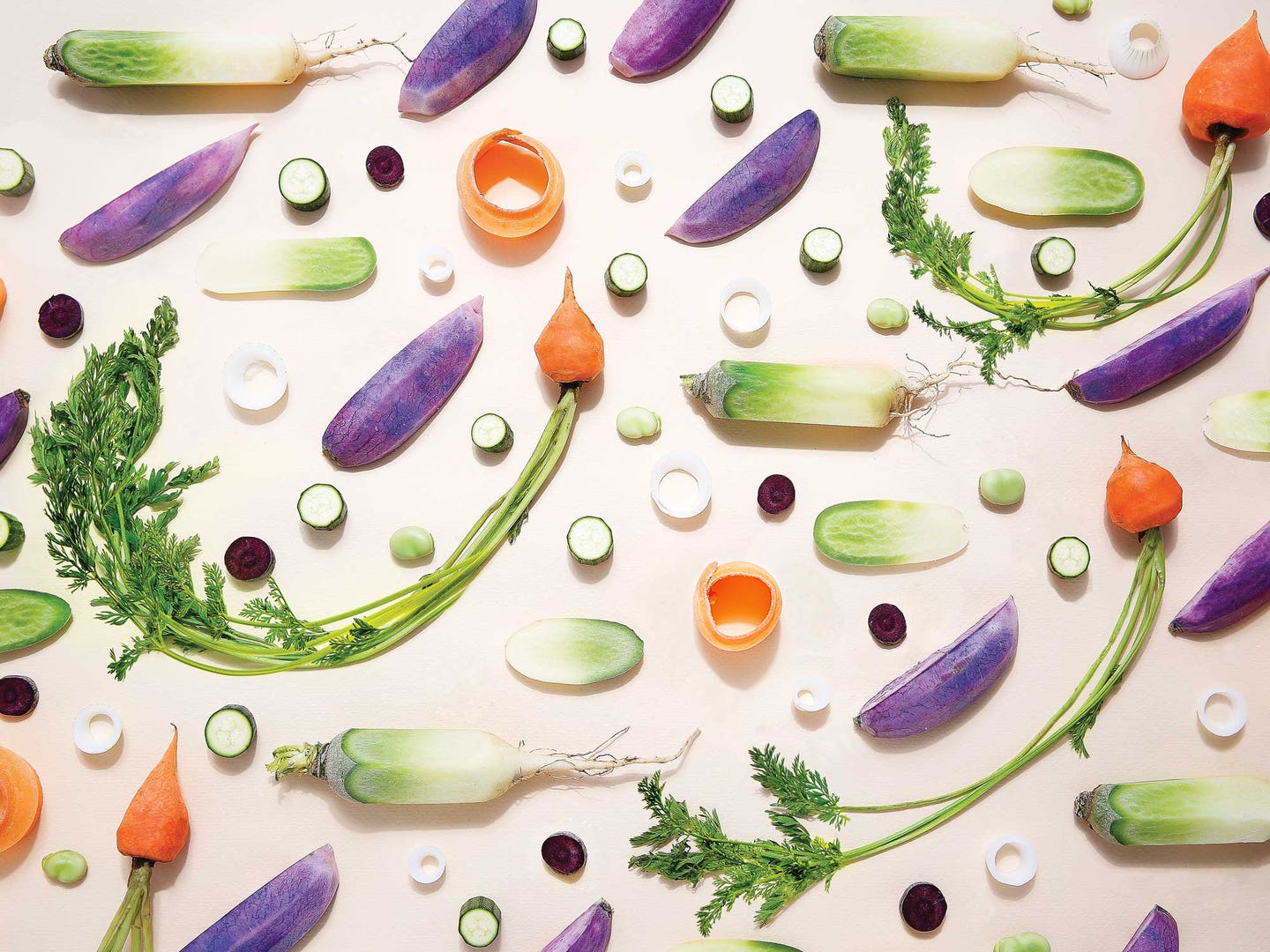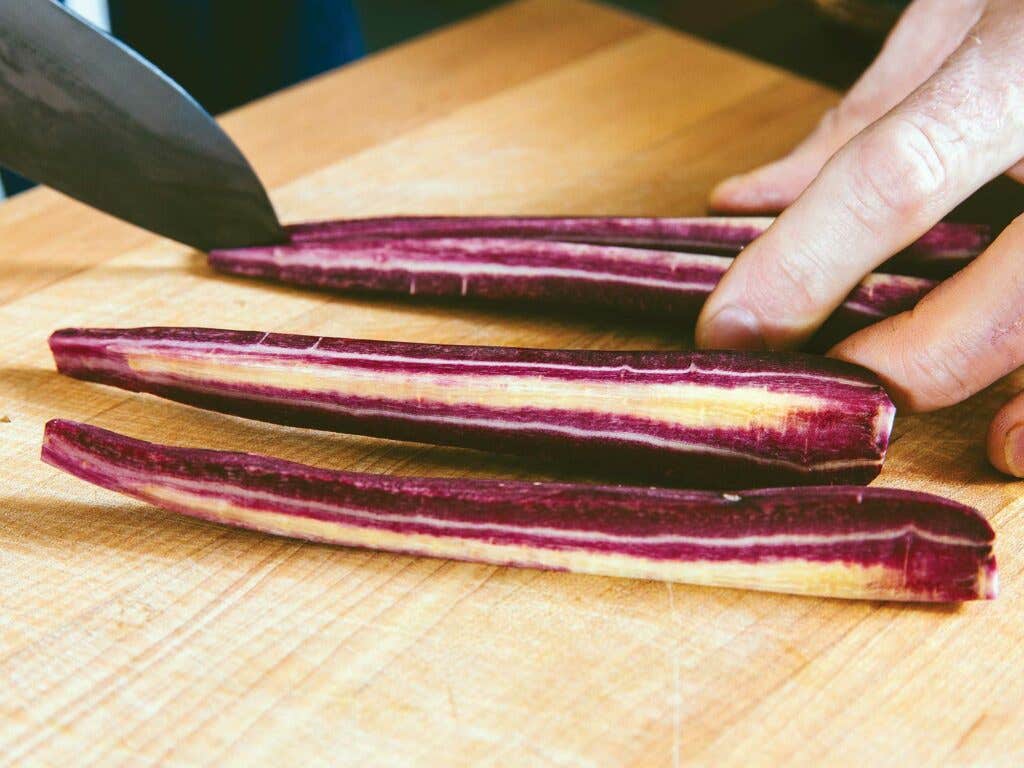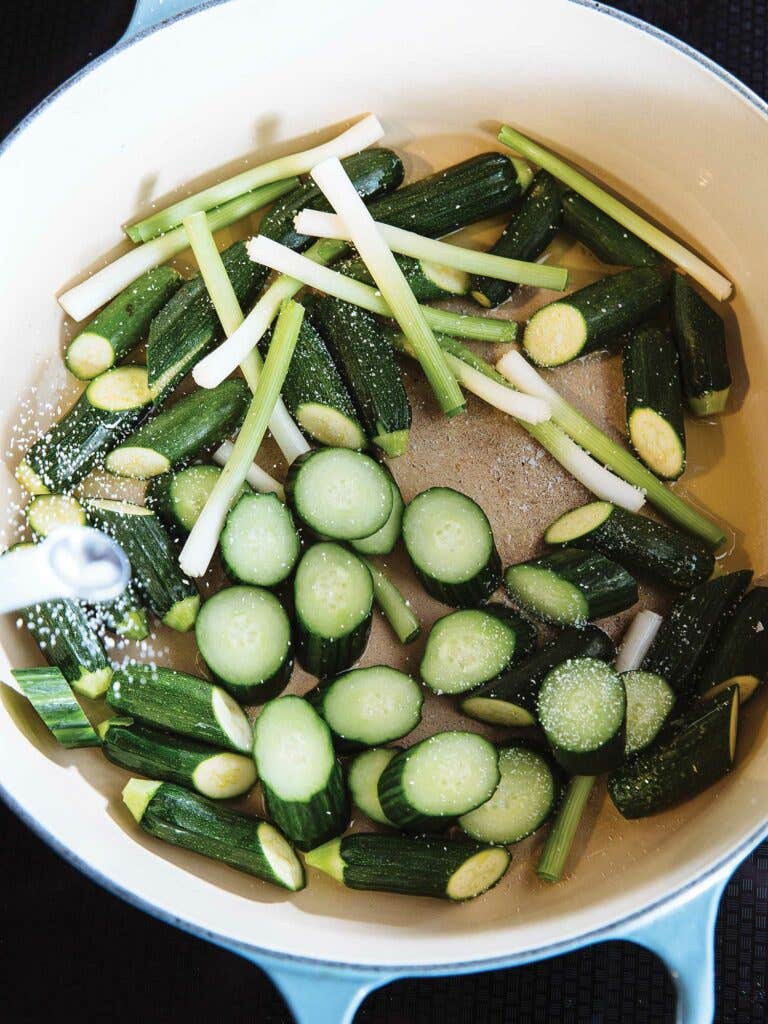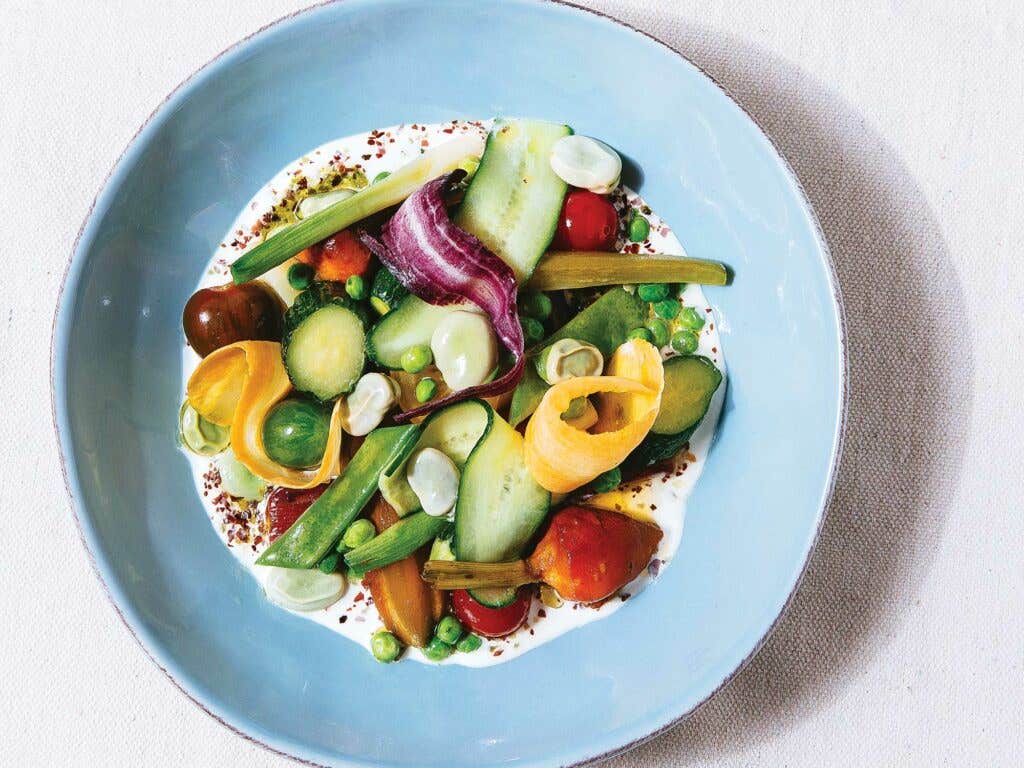
A General Theory for Cooking Great Vegetables
Focus and attention (and a little homemade stock) can help your carrots and radishes shine
Watching Laurent work with vegetables brings to mind tai chi. Central to the traditional Taoist martial art, which I've been practicing for a dozen years, is the notion of "movement with intention." The goal, difficult to master, is to relax, to make your movements purposeful and dense.
This is how Laurent is peeling carrots, relaxed but focused, every gesture considered. "With intention" is a fitting way to describe how Laurent cooks, and how he set about to create a dish of vegetables in which every element would be considered in the context of the whole, every step intended to build flavor.
Laurent doesn't start with a shopping list. Instead, he goes to the market seeking vegetables that look their best that day. As he surveys, a dish begins to emerge—tiny Japanese turnips, multicolored radishes, spring onions, green beans, a rainbow of cauliflowers, miniature zucchini. He needs variety of color, texture, and taste. Those baby carrots are sweet and earthy. The radishes crisp and pleasantly bitter. He sculpts them into perfect points using his favorite French knife, a blade that's been sharpened so often it resembles a whittling tool.
"We want to keep the inherent properties of each ingredient, while enhancing the flavor in a very natural way," Laurent says, trimming radish leaves so only the smallest, most tender ones remain, removing any dirt trapped at the base of the stems with the point of his knife.
"Vegetables are good as they are, so the goal must be to make them better by cooking them. Otherwise you would just leave them alone." One way is to "season" them with a little stock, either chicken or kombu, both rich in umami and proteinaceous ("Protein always makes things better," he says).
Laurent's preferred method of cooking vegetables is pan-roasting them over high heat with salt and olive oil in a covered pot—known in French as cuisson à l'étouffée or "cooked in a crock." This technique concentrates flavor and draws out moisture. When you add stock, the vegetables draw up that moisture, gaining flavor from natural glutamate, and the stock reduces to a glaze. "A radish cooked in water tastes watery," Laurent notes. "A radish cooked à l'étouffée has more flavor and a better texture. It tastes more like a radish than it did before."

For this recipe, Laurent draws from a canon of dishes in which vegetables are cooked individually. Among the most familiar is a classic ratatouille, the Provençal vegetable stew. While you could just dump all of its ingredients into a pot and simmer until done, when you treat each component individually and assemble thoughtfully, the result is transformative, more than the sum of its parts. The most elaborate example of this sort of dish is Michel Bras' gargouillou de jeunes légumes, for which up to 80 different leaves, flowers, and vegetables are cooked separately and assembled just before serving.
Laurent's medley is something in between. The recipe echoes ragouts and ratatouilles he cooked in the early 1990s at Le Louis XV in Monaco, where he was executive chef. From his selection of seasonal vegetables each is cooked individually à l'étouffée. You could also grill or roast a few in the oven for additional variation. To provide comparison and contrast, some vegetables should be left raw.
Prepping the vegetables takes some time but affords occasion for contemplation. "Those meditative moments of peeling fava beans, turning carrots, trimming artichokes, when everyone gathers around the garde-manger to help—that's a really nice time in the professional kitchen," Laurent recalls. "At my first job, at the Hôtel du Cap d'Antibes, we had 10 cases of artichokes to peel and turn twice a week. We'd all gather around. The old guys would laugh and tell stories while the young cooks would try to keep quiet and not make mistakes."
Keeping quiet, relaxing while focusing on the task at hand, moving with purpose to avoid mistakes—perhaps there is a Tao of cooking, a tai chi of prepping vegetables.
Once the vegetables are cooked, Laurent gathers them on a pool of almond cream enriched with kombu stock and dabbed with a bright herb and pistachio relish (more protein goodness). As you eat, the cream coats the vegetables and holds the elements together. The relish provides a bracing contrast to the richness. Complex and satiating, but also fresh and light, this medley is definitively not a salad or a side dish. These are vegetables with intention.
Get Picky

You can look a fish in the eye or smell the sweetness of ripe fruit, but vegetables are harder to read. Look for the brightest colors and the firmest, blemish-free flesh. Their aroma should be clean, earthy, and sweet. If dirt still clings, it too should smell rich like garden soil, not mildew.
For this recipe, you want a variety of colors, textures, and flavors, all of which can be enhanced by the way they're chopped, shaved, or carved. Look for brassicas such as cabbage, Brussels sprouts, and broccoli for their rich, bitter flavor. Roots like radishes, beets, and carrots bring natural sweetness, earthiness, and color. Stems and stalks, like asparagus and celery, provide a distinct crunch. Beans and other legumes (in the pod or out), alliums (onions, leeks, scallions, and shallots), and tomatoes and cucumbers (both technically fruits), are all welcome. Whittle radishes to points, curl carrots into ribbons, keep tiny tomatoes whole. The goal is to treat each element artfully, with purpose.
Take Stock

In classic French cuisine, stocks are used as a supporting base or background, and are usually unseasoned, so the dish can be finished with salt or pepper as desired. You don't even need to add aromatics: Simply steep and simmer chicken bones or kombu sheets in water to extract maximum flavor. (You can think of it like an infusion.) The goal is to create umami, or the elusive flavor of glutamate: a product of two amino acids found in protein (glutamic acid and alanine) that supports and amplifies other flavors. Using stock in two ways here bolsters the vegetables' flavor and enriches the almond cream.
Cook with an Accent
A dish with so many disparate elements, even if they are all vegetables, needs something to hold it together. Here, Laurent unites the vegetables with a pool of almond cream, which adds fresh flavor and richness. Acid, spice, and salt are integrated with dabs of a pungent relish of parsley, scallions, chile paste, pistachios, and preserved lemons.
Together, these accents create a melding of flavor, transforming vegetables into a meal.

Keep Reading
Continue to Next Story










